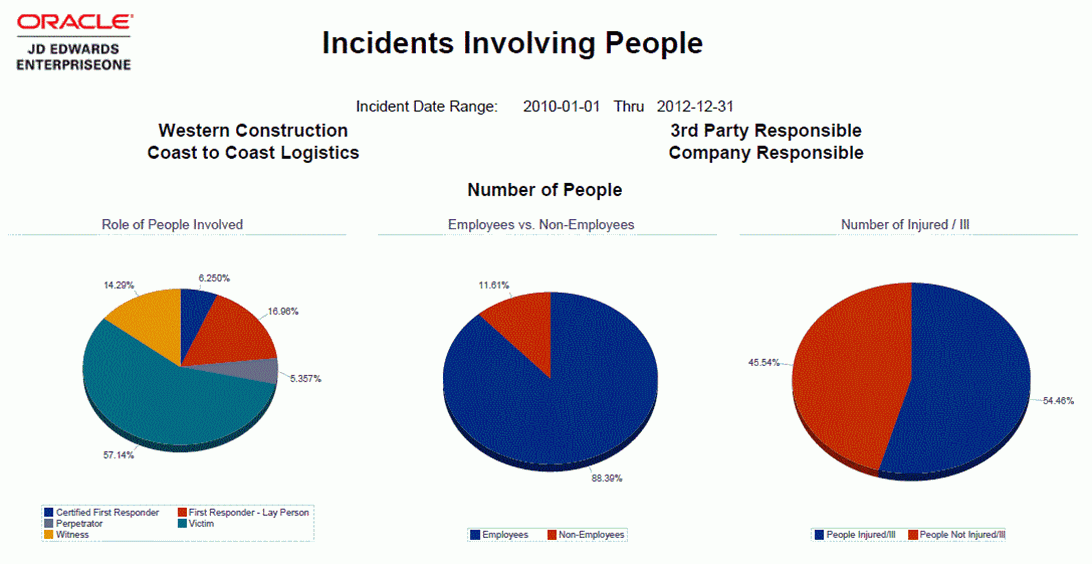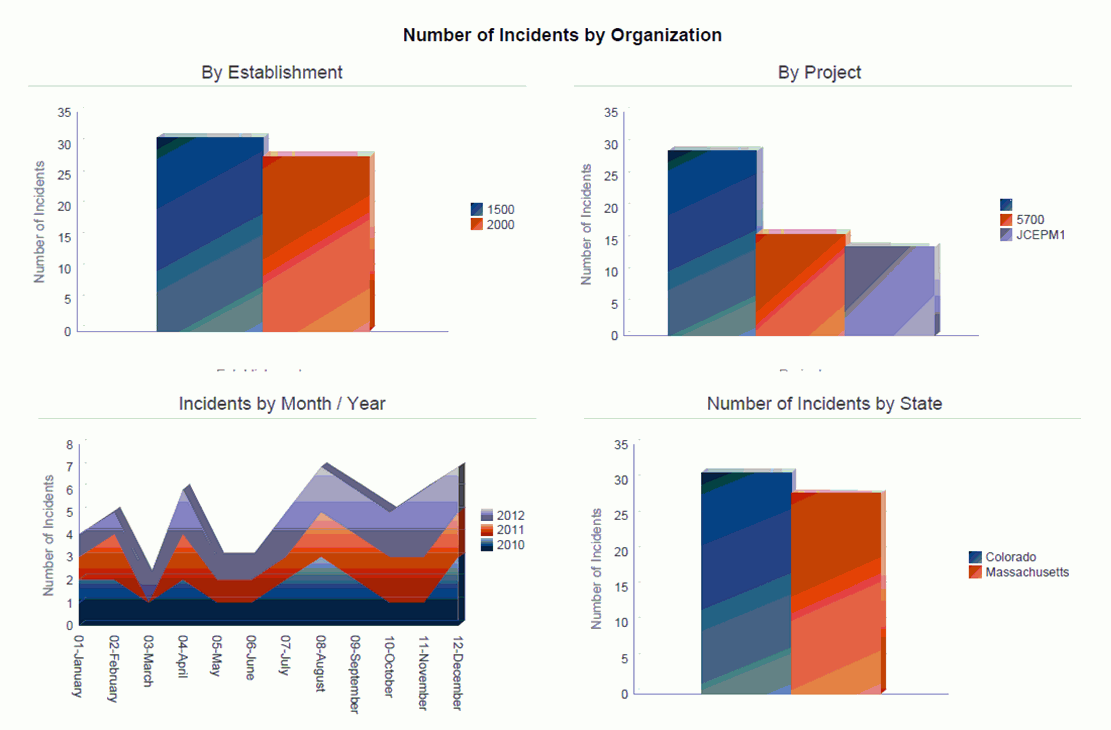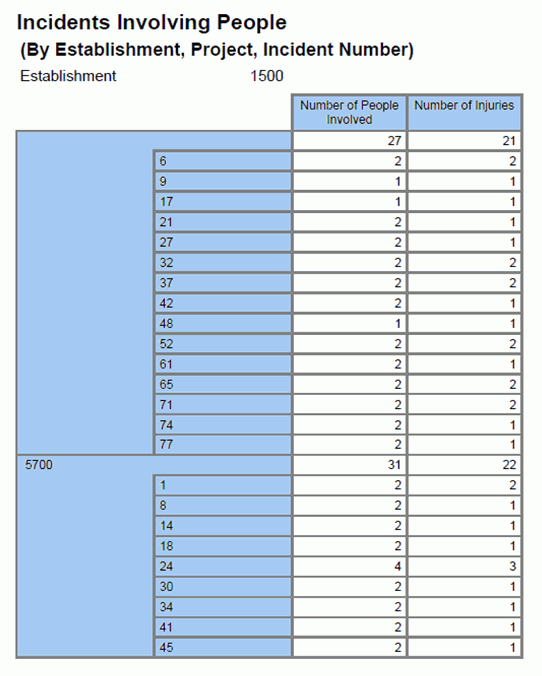Detailed Injury / Illness Summary
Use this report to analyze the illnesses and injuries for people related to incidents. Only those people who have complex injuries and therefore have their injuries or illnesses detailed in the Incident/Illness table (F54HS021) are included in this report. This report goes into the details of the specific injuries and illnesses and counts the number of injuries, so a person who has a complex injury may count more than once. Only grid rows with People Level of Detail equal to 2 or 3 are included in this report.
In addition to being able to filter incident people illness / injury records on whether they are an employee or not, you can filter records on whether the injury is an OSHA recordable injury or not. This report contains the following components:
Top 5 Injury/Illness Events for Additional Injuries or Illnesses (vertical bar graph)
Top 5 Injury/Illness Sources for Additional Injuries or Illnesses (vertical bar graph)
Top 5 Nature of Injury/Illness for Additional Injuries or Illnesses (vertical bar graph)
Top 5 Parts of Body Involved for Additional Injuries or Illnesses (vertical bar graph)
Top 5 Establishment Complexity Rates Based on All Injuries / Illnesses. (gauge) (Complexity rate is the total number of injuries or illnesses divided by the number of injured or ill people.)
Injury / Illness Summary (By Establishment, Project) (table) (This table counts all injuries including those on the F54HS02 and the F54HS021 tables. It counts all incidents that have at least one injury or illness. The complexity rate is the total number of injuries or illnesses per injured or ill person.)
Reference tables with Illness / Injury Classification, Establishment, Project, Event, Source, Nature of Illness / Injury, and Part of Body descriptions






